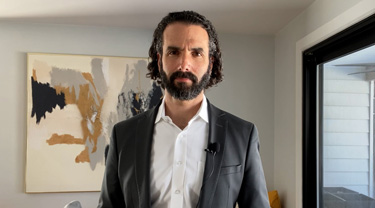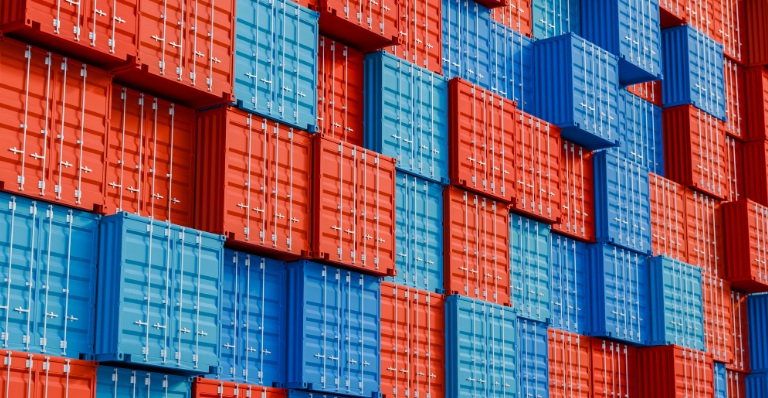As the impacts of this humanitarian crisis unfold, our thoughts are with Ukrainians, both at home and abroad.
Russian President Vladimir Putin’s large-scale invasion of Ukraine—the first major war in Europe since the end of the Second World War—is inflicting widespread casualties that’s resulting in a humanitarian catastrophe. The economic fallout of this crisis is having reverberations around the world.
EDC Economics continues to monitor developments—including the duration, intensity, and location of conflict, the terms of any negotiated settlement, as well as ongoing sanctions and trade restrictions taken by both Russia and the West—as we update our forecasts.
Markets have remained relatively composed, a sign of the times, perhaps, numbed by episode-after-episode of “unprecedenteds.” The VIX, the Chicago Board Options Exchange’s famed fear gauge, isn’t much different from where it was early last year and is certainly lower than where it was at this time, two years ago. Haven assets, like gold, have been trading in the same range for much of the last two years. If anything, markets appear more preoccupied with the reaction of central bankers than with the actions of the generals.
The conflict threatens to exacerbate ongoing supply chain disruptions, already a key driver of global inflationary trends. Russia is the world’s largest exporter of grains and fertilizers and supplies about 40% of the world’s palladium, 30% of titanium, is a key nickel producer, the third-largest exporter of coal and steel, and fifth-largest wood exporter. Few industries will escape the pricing pressures caused by shortages of such critical materials—from agriculture and autos to aerospace, cleantech, construction and communication technologies.
Ukraine is also a major exporter of agricultural products, metals, machinery and auto parts. And depending on the scale of the conflict, there’s a risk of disruption at neighbouring ports on the Black Sea, including Romania and Bulgaria in the west, Georgia in the east and Turkey in the south.
As the war rages on, energy costs are soaring as are concerns about the oil and gas industry. Russia produces 10% of the world’s oil supplies. On March 1, Brent crude jumped above the US$100 mark and hasn’t looked back since. We expect prices to stay high for a few quarters, notwithstanding the release of strategic reserves, thanks to currently low global spare capacity. Depending on the scale of the conflict, oil and gas from Central Asia that’s shipped through Azerbaijan and Georgia for delivery via the Black Sea could also be at risk.
Critically, for Europe, Russia supplies 40% of European natural gas, much of which goes through Ukraine, which is also a trans-shipment point for oil, with approximately 250,000 b/d of crude destined for Europe. While we don’t expect Russia to cut off supplies completely, any disruption in natural gas flows to Europe would be painful.
You should also check out
With growing risks, Canadian companies face new challenges. EDC’s Global Economic Outlook offers insights to help you make better business decisions.
As a result, we expect this to drive up short-term global inflation, with significant implications on Europe, in particular. This will complicate an already difficult decision for the European Central Bank (ECB), which will now have to contend with additional inflationary pressures, on the one hand, and the impacts of weaker confidence, consumption, and growth, on the other.
A recent ECB scenario analysis estimated that a 10% shortage in gas could shave almost a full percent off the euro area economy. The impact would be most severe among the larger natural gas importers, like Germany and Italy, and in industries most dependent on gas. This conundrum could well result in a decoupling of major central bank policies, around the timing of interest rate liftoff.
The U.S. Federal Reserve is expected to proceed with interest rate increases as planned, albeit more cautiously than many had originally anticipated. The ECB, however, will likely continue to focus on a downscaling of its asset purchases for now, making any interest rate moves dependent on the de-escalation of military tensions and associated impacts on economic activity.
The bottom line?
The crisis in Ukraine will further exacerbate inflation, pressuring energy and food costs, and erode the purchasing power of consumers and businesses around the world. At the same time, uncertainties will rattle confidence and disrupt economic activity. We expect this to lead to a break between European and U.S. economic growth and monetary policy, a deviation that should play out on the currency side as well. For more on this, keep an eye out for EDC Economics’ upcoming Global Economic Outlook.
This commentary is presented for informational purposes only. It’s not intended to be a comprehensive or detailed statement on any subject and no representations or warranties, express or implied, are made as to its accuracy, timeliness or completeness. Nothing in this commentary is intended to provide financial, legal, accounting or tax advice nor should it be relied upon. EDC nor the author is liable whatsoever for any loss or damage caused by, or resulting from, any use of or any inaccuracies, errors or omissions in the information provided.







